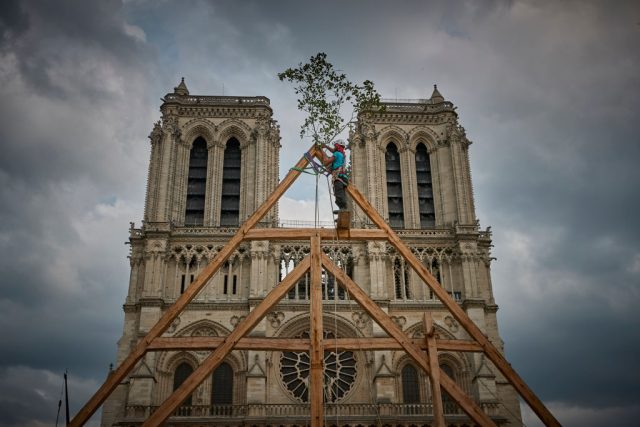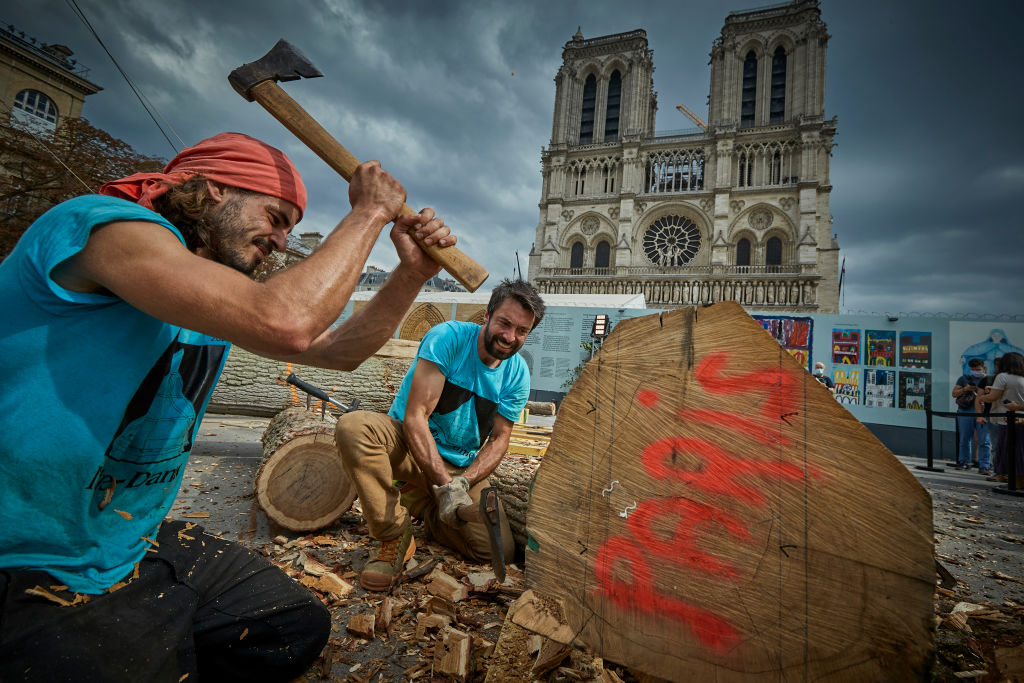Paris has many iconic landmarks that are cherished by visitors and citizens alike – the Louvre, the Arc de Triomphe, and of course, Notre Dame Cathedral, perhaps the most well known and beloved cathedral in Europe – some would argue the entire world. It is certainly the most famous.
When it was badly damaged in a fire in the spring of 2019, the whole world mourned, and many wondered how, or even if, the destruction could be repaired in a way that was in keeping with the church’s centuries-old architecture.
How to rebuild Notre Dame became a constant topic of conversation and threads on social media, far beyond the borders of France.
It is a much loved place, and its recovery from the blaze was a pervasive theme in French social circles, in newspaper editorials, and of course on websites dedicated to endless posts about how the restoration should proceed.
It was not simply a matter of who could tackle the job, but whether the old building could be repaired at all. Its entire spire was destroyed, as were many triangle-shaped trusses that were an intricate part of the church’s nave.

In mid-September, a team of professional carpenters put in place a 30 ton, French oak truss – by hand – to demonstrate how Notre Dame was built all those centuries ago.
It was a spectacle that thrilled and delighted hundreds of onlookers, all of whom were gathered to watch the event, scheduled in sync with European Heritage Days.
General Jean-Louis Georgelin is head of the reconstruction project at the cathedral. In an interview the day the massive truss was hoisted, he said, “It shows… we made the right choice in choosing to rebuild the carpentry identically, in oak from France.”
How the trusses would and should be rebuilt was a contentious point of debate; some felt a fire-retardant material, like cement, might be a wiser option, to help avoid any future disasters like the fire last year. But tradition won out, and Georgelin is convinced they made the right decision.
Twenty-five trusses will eventually be installed, but experts say that the carpentry cannot begin until sometime in 2022.
A key difficulty the teams are facing is that some of the ancient stones in Notre Dame were marred by the flames, and they are crucial for supporting the trusses.
The type of stone used to build the cathedral, on which construction began in 1163, is not easy to find in France – or anywhere else – anymore, Georgelin noted. But doing the rebuild this way, he added, has shown the team how they should rebuild the frame before replacing the spire.

Even the new spire became a point of contention in some quarters; some advocated for a modern looking replacement. But again, tradition had won the day, and eventually the new spire will be in keeping with Notre Dame’s grand, ancient architecture.
French president Emanuel Macron has expressed hope that the renovations will be complete by the time Paris hosts the Olympics, in 2024.
But most involved in the project feel that date is overly optimistic; damaged parts are still being removed and cleaned, like the thousands of pipes that are part of the cathedral’s magnificent pipe organ.
Another Article From Us: 850 Years of History Engulfed in Flames – A Look at the Notre Dame Aftermath
One issue on which everyone involved in the project agrees is this: Notre Dame is such an important part of French history, culture and religion that it will be saved, no matter how much time it takes, or how much money it costs. It is central to French identity, and every effort will be made to save what can be saved, and reconstruct those parts that were destroyed by the fire.
